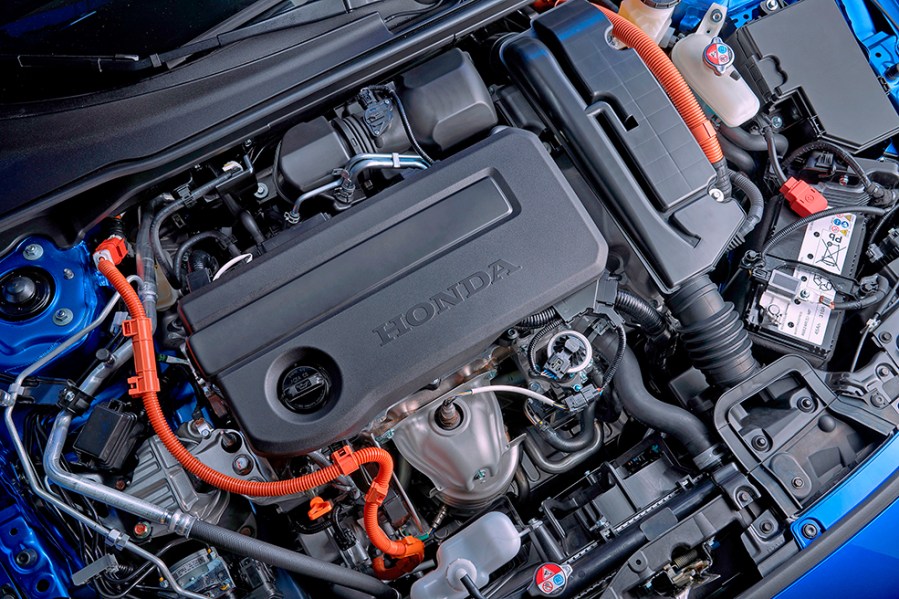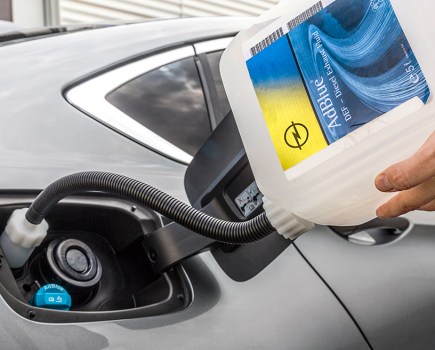Nissan and Honda produce some of the cleverest hybrid systems on sale. Here’s your quick guide to how Nissan e-POWER and Honda e:HEV work
Words: Chris Randall
If you’re not yet ready to go fully electric, or a plug-in hybrid still doesn’t quite meet your needs, then two Japanese carmakers have introduced some alternative ways to experience electrified motoring. Their systems are employ some very clever technology that promises to cut fuel consumption and emissions without what some drivers may see as the compromise of having to plug in and recharge.
Nissan e-POWER
Nissan’s e-POWER set-up, launched back in 2017 on the Japanese-market Note and now available in the ever-popular Qashqai. Consider the powertrain as similar to a range-extender and you won’t be far wrong, the system blending a 1.5-litre 3-cylinder turbocharged engine with a 140kW electric motor and a 2.1kWh lithium-ion battery.
The innovative tech starts with that petrol engine which optimises performance and economy through the ability to vary its compression ratio – an actuator alters the length of the piston stroke resulting in a ratio of between 8:1 and 14:1. But the most important thing to note is that the petrol engine never directly drives the front wheels. Instead, the electric motor is the sole source of power to the wheels and at low speeds it receives energy from the battery.
When higher speeds are called for the engine acts as a generator, sending electricity via the inverter directly to the drive motor and to the battery for recharging, and should maximum acceleration be needed the electric motor draws power from the both the engine and battery. Nissan say that a couple of miles should be possible on electric power alone, but that in reality the engine will be working most of the time.

And to make the driving experience feel as natural as possible Nissan’s engineers developed a system called ‘Linear Tune’ which progressively increases engine speed as the motor requires energy. The result is greater connection between engine noise and road speed, avoiding the soaring revs that can often accompany CVT transmissions. A regenerative braking system also feeds energy back to the battery, and allows ‘one-pedal’ driving where little use is made of the hydraulic brakes. It’s all clever stuff and the result is claimed fuel economy of 53.3mpg and CO2 emissions of 119g/km.
Those figures might not sound as impressive as you’d hope, but compare them to the 44.5mpg and 143g/km claimed for the 138bhp 1.4-litre DIG-T unit that’s also available in the Qashqai and they represent useful improvements.
Honda e:HEV
That brings us to the latest version of the Honda Civic, a model that’s now in its eleventh generation and one that also provides drivers with a clever way of experiencing hybrid motoring. Termed e:HEV, it’s the only powertrain offered on this latest model and claims to provide some impressive efficiency figures of 56-60mpg and 108-114g/km CO2 emissions.
Up front is a 2.0-litre DOHC engine featuring Honda’s well-known i-VTEC variable valve timing and lift tech and it’s a unit that runs on the more efficient Atkinson cycle. The maximum electric motor output is 181bhp and 315Nm of torque, while the battery is a 72-cell lithium-ion unit delivering 1.05kW. But there’s a key difference compared to the Qashqai’s arrangement, which is that the engine is able to drive the front wheels directly. What sets the e:HEV system apart is that it automatically selects one of three modes with the aim of maximising efficiency without the need for driver input.
Low speed urban driving sees the system select EV Drive where the electric motor draws power from the battery to drive the wheels, while Hybrid Drive is chosen for greater performance and sees the engine act as a generator to provide power to the electric motor, while also providing charge to the battery. The third setting is Engine Drive which, as the name implies, sees the wheels driven by the petrol engine (with some assistance from the electric motor as necessary) and is the mode adopted for constant speed such as motorway driving.

Honda doesn’t give range figures for EV mode alone, and while the small battery means it’s unlikely to be far there’s still the potential for some useful fuel savings if you can make the most of the sophisticated hybrid powertrain. That said, it’s worth pointing that Toyota’s Corolla hybrid claims broadly similar economy and emissions figures, so which you go for is probably a matter of personal preference.
Cars such as these can be considered as representing yet another stepping stone towards a full battery electric vehicle, and for some buyers the promise of frugality and ease of use will make them ideal. But it’s worth bearing in mind that, if you’re happy to charge a car yourself, a plug-in hybrid has the potential to offer even greater efficiency than the pair we’ve looked at here. Put such considerations aside, though, and it’s hard not to be impressed by the technology contained within these cars, and a clear sign that as we head towards the 2030 electrification deadline engineers remain hard at work developing ever-more innovative ways to make internal combustion motoring cleaner and more efficient.








